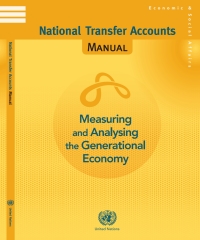6. Explain the difference between accounting value and market value. Which is more important to the financial manager? Why?

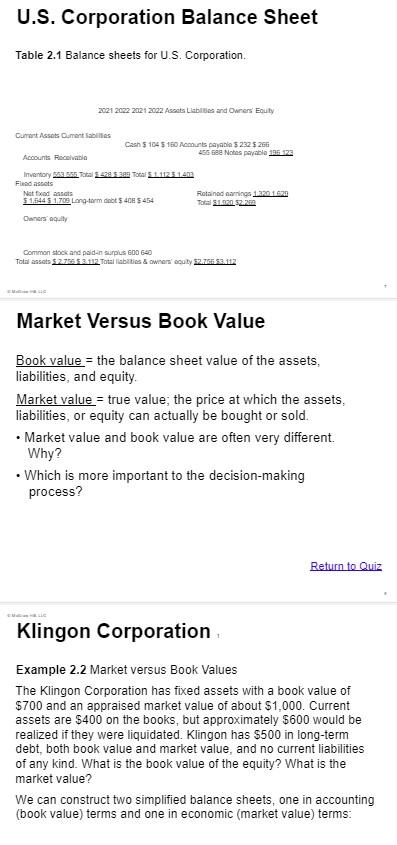
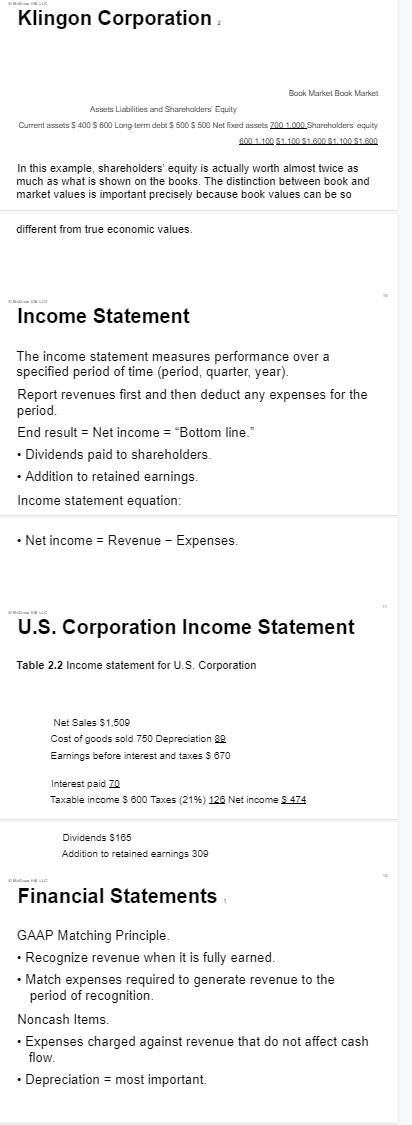

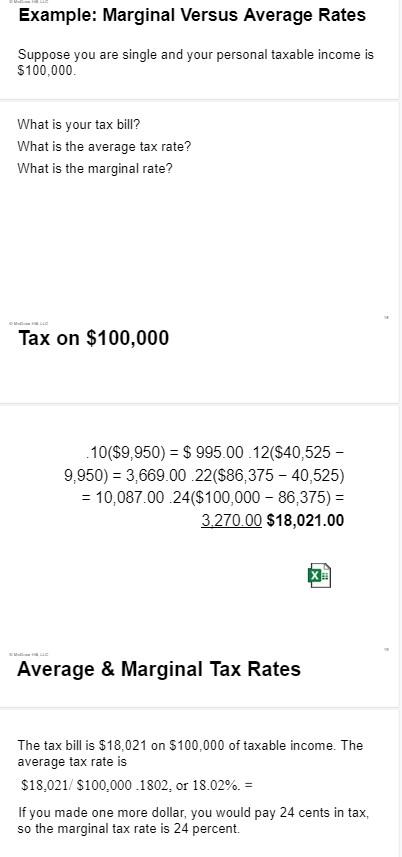


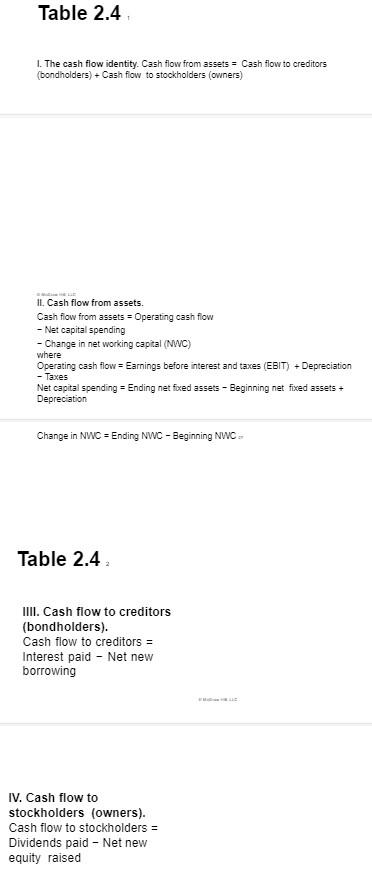
The Balance Sheet A snapshot of the firm's assets and liabilities at a given point in time ("as of ..."). Assets. - Left-hand side (or upper portion). - In order of decreasing liquidity. Liabilities and Owners' Equity. - Right-hand side (or lower portion). - In ascending order of when due to be paid. Balance Sheet Identity. - Assets = Liabilities + Stockholders' Equity. The Balance Sheet The Balance Sheet Net working capital. - Current assets minus current liabilities. - Usually positive for a healthy firm. Liquidity. - Speed and ease of conversion to cash without significant loss of value. - Valuable in avoiding financial distress. Debt versus Equity. - Shareholders' equity = Assets Liabilities. Table 2.1 Balance sheets for U.S. Corporation. 2021202220212002 , peosts Llabilica and Owners' Equty. Common stock and paid-n eurpiss 600640 Market Versus Book Value Book value = the balance sheet value of the assets, liabilities, and equity. Market value = true value; the price at which the assets, liabilities, or equity can actually be bought or sold. - Market value and book value are often very different. Why? - Which is more important to the decision-making process? Klingon Corporation Example 2.2 Market versus Book Values The Klingon Corporation has fixed assets with a book value of $700 and an appraised market value of about $1,000. Current assets are $400 on the books, but approximately $600 would be realized if they were liquidated. Klingon has $500 in long-term debt, both book value and market value, and no current liabilities of any kind. What is the book value of the equity? What is the market value? We can construct two simplified balance sheets, one in accounting (book value) terms and one in economic (market value) terms: Book Market Doak Market Assets Liablities and Sharehalders Enuity Cument assets $400 S 600 Lang term debt S600$500 Net fixed assets 7001,000 Shareholders equity 6001.100.51.100.51.600$81.100$1.600 In this example, shareholders' equity is actually worth almost twice as much as what is shown on the books. The distinction between book and market values is important precisely because book values can be so different from true economic values. Income Statement The income statement measures performance over a specified period of time (period, quarter, year). Report revenues first and then deduct any expenses for the period. End result = Net income = "Bottom line. . - Dividends paid to shareholders. - Addition to retained earnings. Income statement equation: - Net income = Revenue Expenses. U.S. Corporation Income Statement Table 2.2 Income statement for U.S. Corporation Net Sales \$1,509 Cost of goods sold 750 Depreciation 39 Earnings before interest and taxes $670 Interest paid 70 Taxable income S 600 Taxes (21\%) 126 Net income $474 Dividends $165 Addition to retained earnings 309 Financial Statements GAAP Matching Principle. - Recognize revenue when it is fully earned. - Match expenses required to generate revenue to the period of recognition. Noncash Items. - Expenses charged against revenue that do not affect cash flow. - Depreciation = most important. Financial Statements Time and Costs. - Fixed or variable costs. - Not obvious on income statement. Earnings Management. Smoothing earnings. GAAP leaves "wiggle room." Global standardization of accounting. - GAAP versus IFRS. - Information about IFRS can be found at this link. Example: Work the Web Publicly traded companies must file regular reports with the Securities and Exchange Commission. These reports are usually filed electronically and can be searched at the SEC public site called EDGAR. Click on this link, pick a company, and see what you can find! Taxes Marginal versus Average tax rates. - Marginal - percent tax paid on the next dollar earned. - Average - total taxes paid divided by taxable income. - If considering a project that will increase taxable income by $1 million, which tax rate should you use in your analysis? Information about IFRS can be found at this link. Return to Quick Quiz Corporate Tax Rates Following the passage of the Tax Cuts and Jobs Act of 2017. the federal corporate tax rate in the United States became a flat 21 percent for corporations. Example: Marginal Versus Average Rates Suppose you are single and your personal taxable income is $100,000. What is your tax bill? What is the average tax rate? What is the marginal rate? Tax on $100,000 10($9,950)=$995.00.12($40,5259,950)=3,669.00.22($86,37540,525)=10,087.00.24($100,00086,375)=3,270.00$18,021.00 Average \& Marginal Tax Rates The tax bill is $18,021 on $100,000 of taxable income. The average tax rate is $18,021/$100,000.1802,or18.02%= If you made one more dollar, you would pay 24 cents in tax, so the marginal tax rate is 24 percent. The Concept of Cash Flow Cash flow = one of the most important pieces of information that can be derived from financial statements. The accounting Statement of Cash Flows does not provide the same information that we are interested in here. Our focus: how cash is generated from utilizing assets and how it is paid to those who finance the asset purchase. Cash Flow from Assets Cash Flow From Assets (CFFA) = Operating Cash Flow (OCF) - Net Capital Spending (NCS) - Changes in NWC ( NWC.) Cash Flow From Assets (CFFA) = Cash Flow to Creditors (CF/CR) + Cash Flow to Stockholders (CF/SH .) Example: U.S. Shest Corporation Balance U.S Corparafon. Example: U.S. Corporation CFFA = OCF - NCS NWC. OCF = EBIT + Depreciation - Taxes =$670+89126=$633 NCS=EndingnetFABeginningnetFA+Depreciation=$1,7091,644+89=$154NWC=EndingNWCBeginningNWC=($1,403389)($1,112428)=$330CFFA=633154330=$149 Example: U.S. Corporation sasance Sheet Example: U.S. Corporation . CFFA=CF/CR+CF/SH CF/CR= interest paid Net new borrowing =$70($454408)=$24 CF/SH= Dividends paid Net new equity =CFFA$165($640600)=$125=$24+$125=$149 1. The cash flow identity. Cash flow from assets = Cash flow to creditors (bondholders) + Cash flow to stockholders (owners) II. Cash flow from assets. Cash flow from assets = Operating cash flow - Net capital spending - Change in net working capital (NWC) where Operating cash flow = Earnings before interest and taxes (EBIT) + Depreciation - Taxes Net capital spending = Ending net fuxed assets - Beginning net fixed assets + Depreciation Change in NWC = Ending NWC - Beginning NWC :r Table 2.4 IIII. Cash flow to creditors (bondholders). Cash flow to creditors = Interest paid - Net new borrowing IV. Cash flow to stockholders (owners). Cash flow to stockholders = Dividends paid - Net new equity raised














